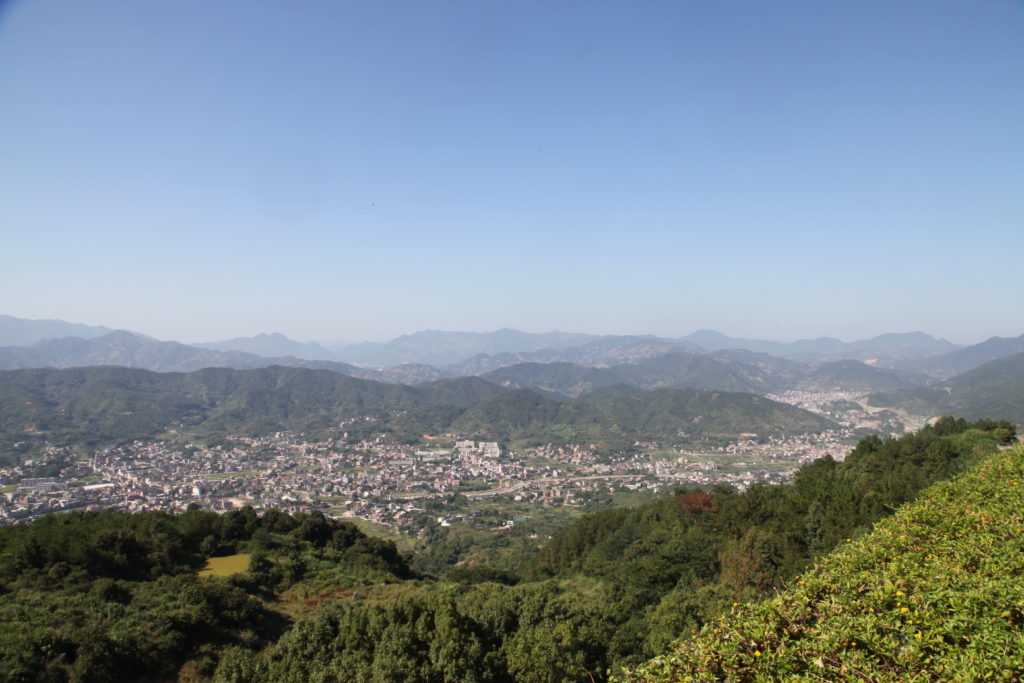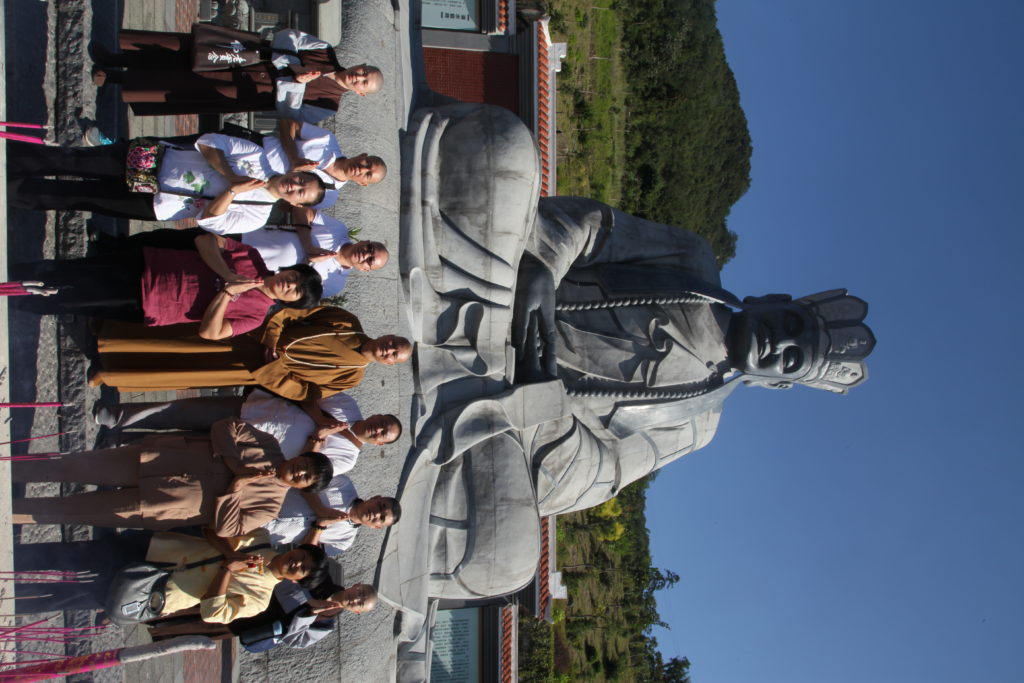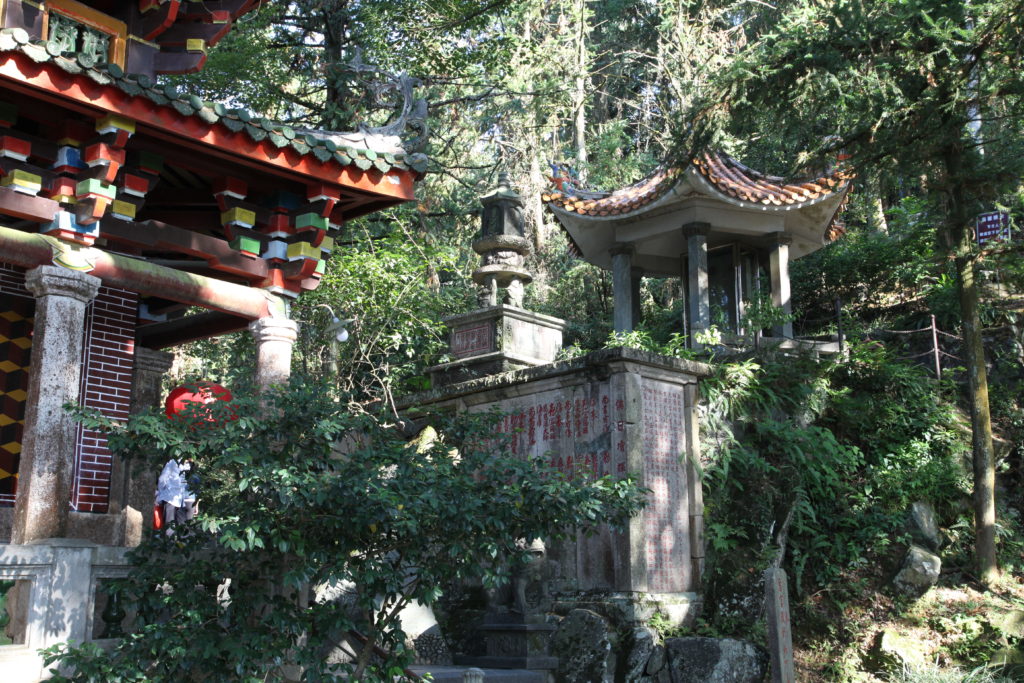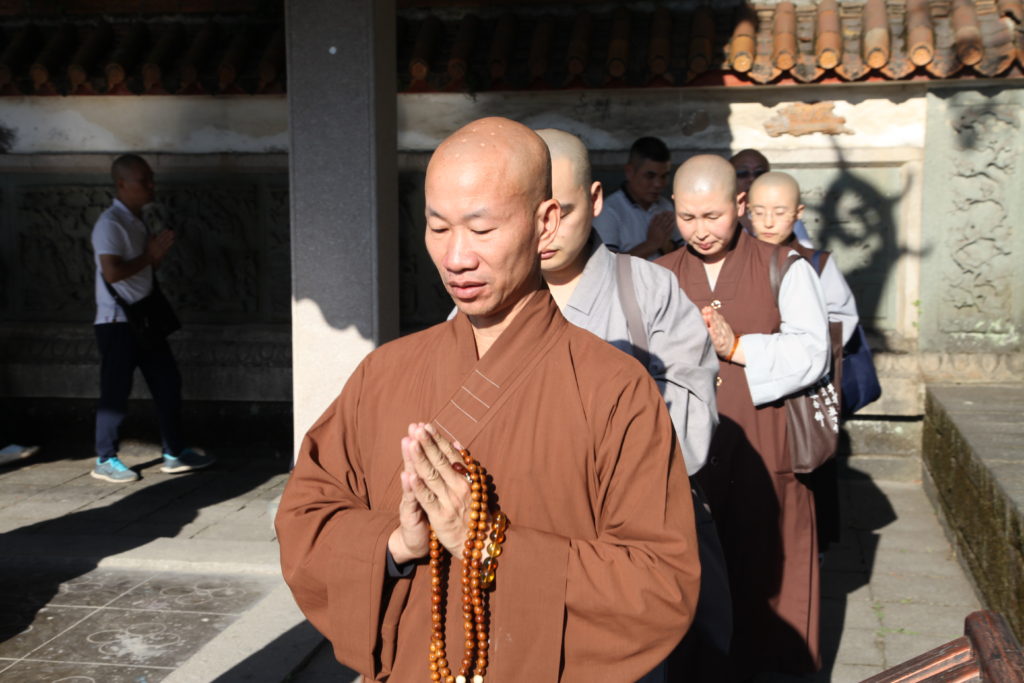Trip to Xiamen
After a week and a half of classes, the majority of Hwadzan employees flew back to Taipei. Venerable Wu Dao wanted to travel to southern Fujian to visit some relatives from the area and pay his respects at an ancestral shrine. I think it was also a chance for him to rest and relax. Big Bear and I joined Venerable Wu Dao’s entourage on this excursion to take photos and collect footage.
For the two-day trip we stayed at the Seaview Resort Xiamen in Xiamen, an island city in southern Fujian province famed for its cleanliness, development, and agreeable subtropical weather. Also called Amoy, Xiamen is one of the original four special economic zones created by Deng Xiaoping in the early 1980s to increase foreign investment and trade. This is no doubt the main cause of the city’s prosperity. Its people speak a dialect of Hokkien called Amoynese, which is mutually intelligible with Taiwanese Hokkien. Fun fact: the difference between Mandarin and Taiwanese is greater than the difference between English and Russian.
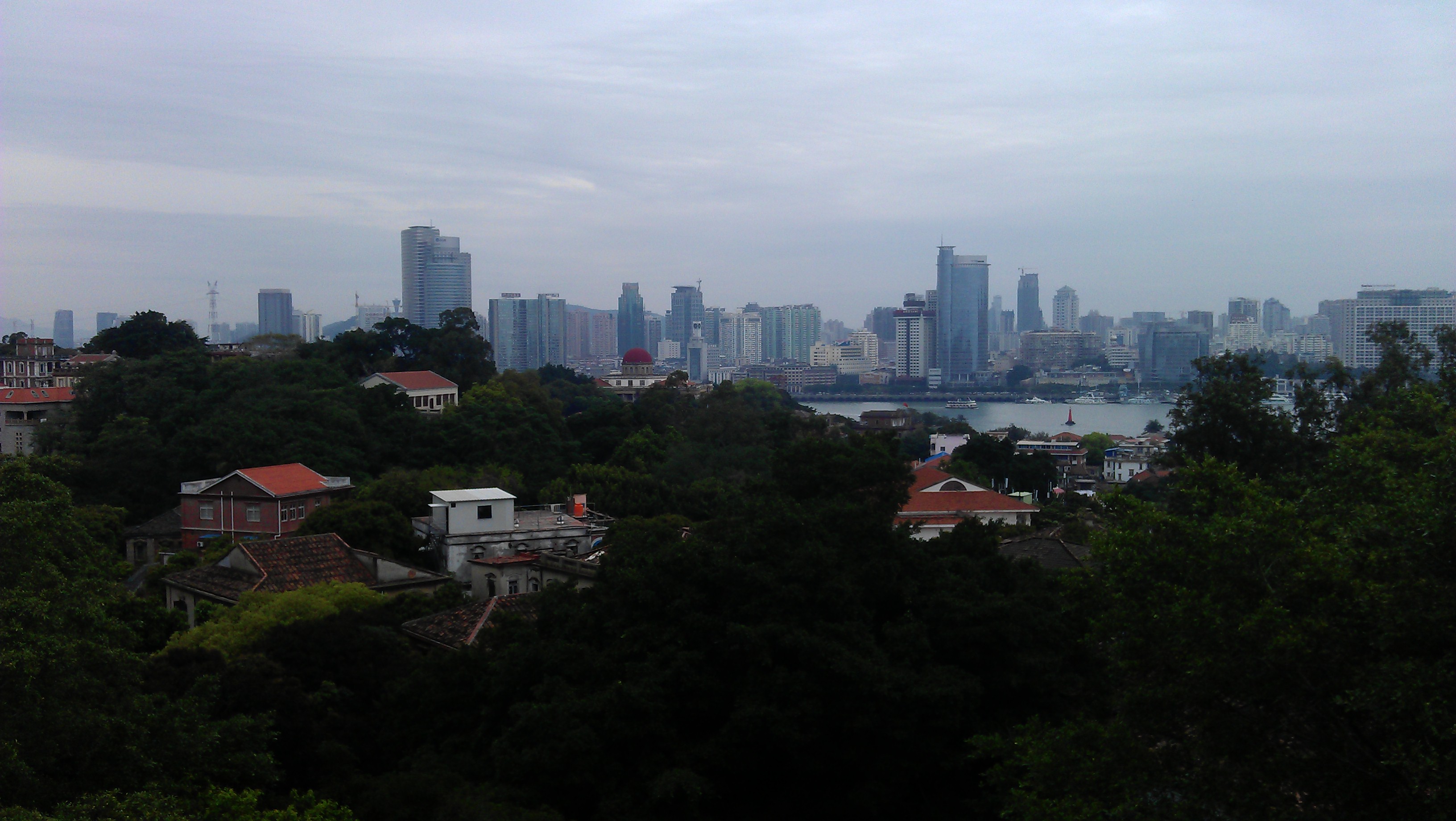
Xiamen
I had traveled to Xiamen several years before for a vacation. The highlight from that trip was visiting Gulangyu, a pedestrian-only island off the coast of Xiamen and a UNESCO World Cultural Heritage Site. The island was made an international settlement after China lost the First Opium War. It is famed for its winding lanes and Victorian-era architecture. The island is also home to China’s only piano museum and has the nickname of “The Island of Music” thanks to its people having the highest per capita ownership of pianos in the country.
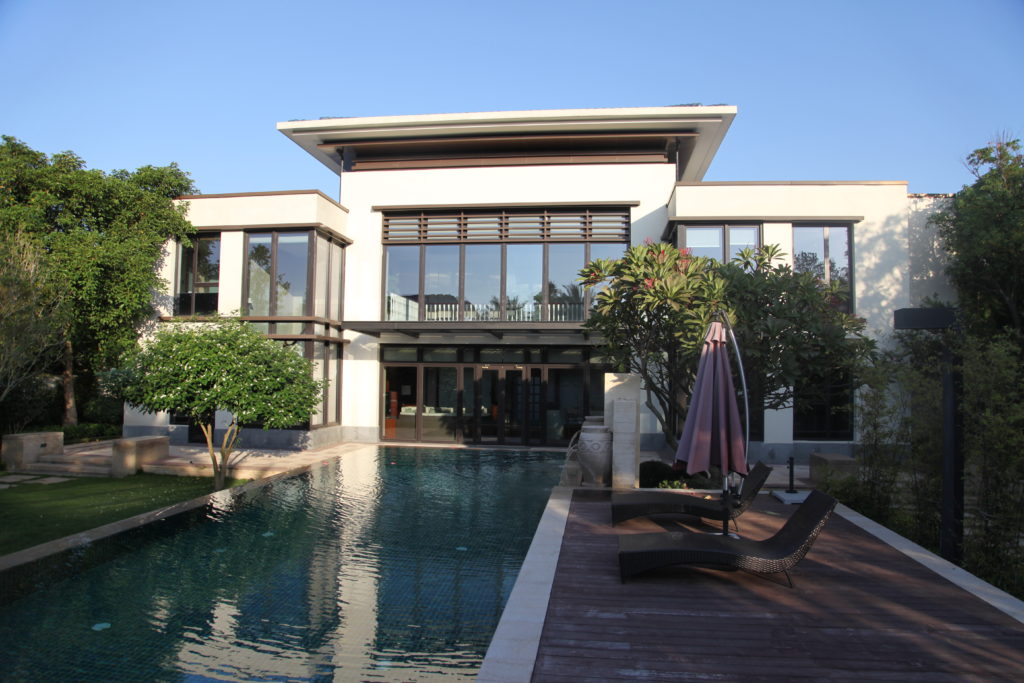
Seaview Resort Xiamen
Ancestral Temple Visit and Ceremony
North of Xiamen, in Anxi district, Quanzhou city, we visited a small temple. I am not 100% sure, but I believe the temple was Venerable Wu Dao’s ancestral temple. Like Venerable Wu Dao, many Taiwanese people trace their roots back to Fujian province. Venerable Wu Dao and the other two venerables held a small ceremony to pay respect to ancestors. Venerable Wu Dao’s relatives were also present at the ceremony.
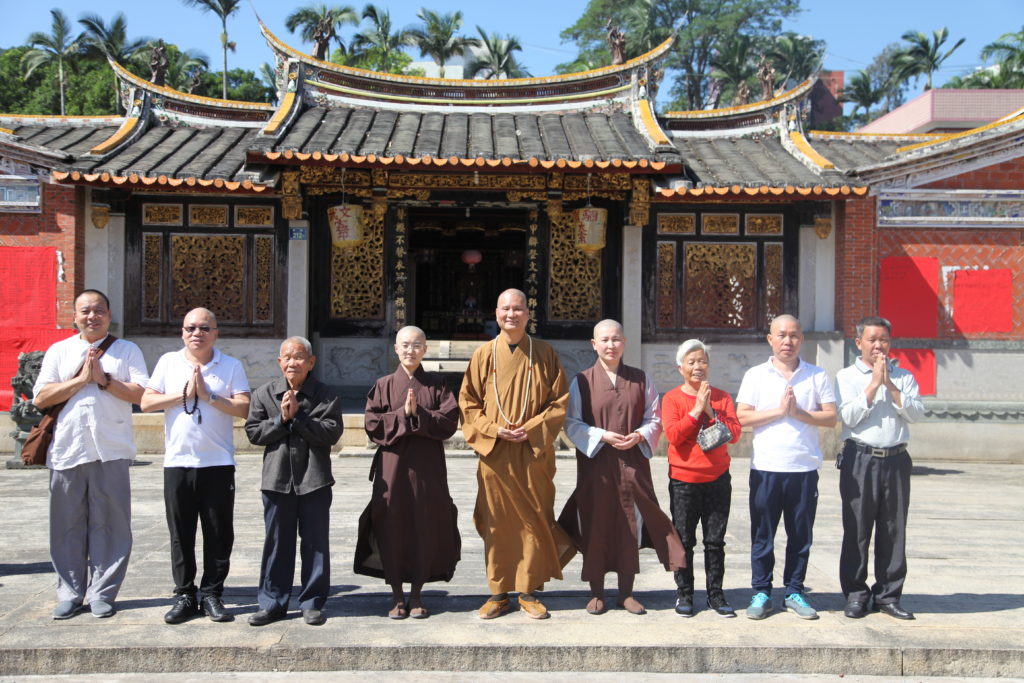
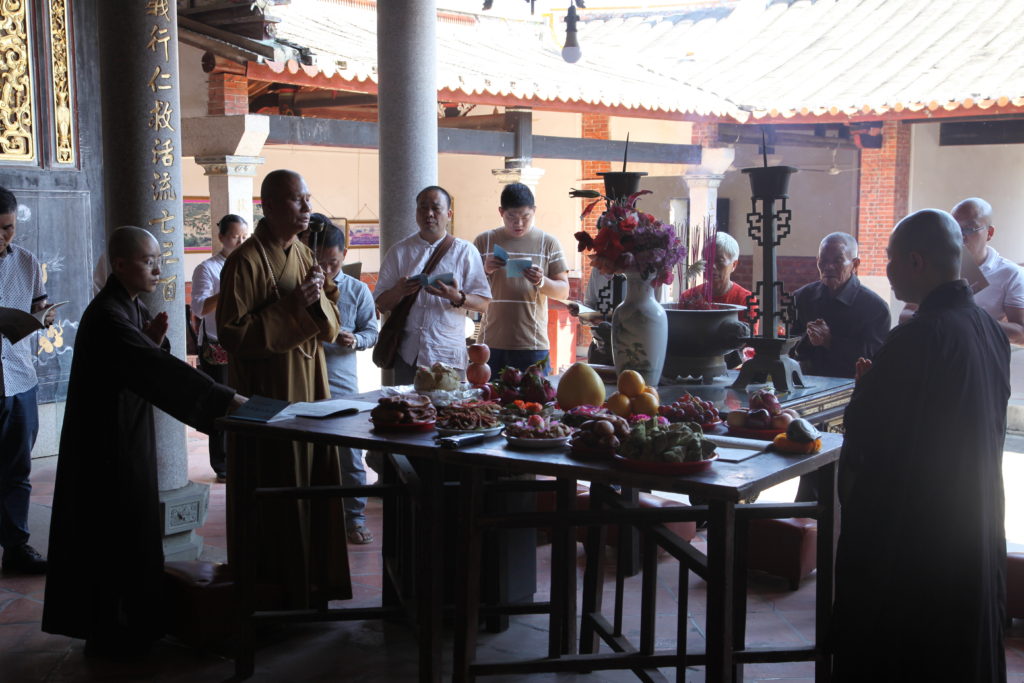
Qingshui Crag
After our visit to the ancestral temple we drove to a nearby tourist destination called Qingxi Crag. In the Song dynasty (960–1279) a Buddhist Zen master named Qingshui trained in this area and is said to have gained supernatural powers through his learning and preaching of the Dharma and meditation. Devotees now praise him and the temple at Qingshui Crag is named after him.
Upon arrival at Qingshui Crag we took some photos in front of a giant statue of Master Qingshui. Then our entourage proceeded down the path through the mountain forest that led to the temple. Along the path we ran into another monk and his disciple who Venerable Wu Dao knew. The two parties stopped at a small pool outside the entrance of the temple. Someone got some tea and we spent thirty minutes just hanging out and chatting. I should note here that a famous Chinese tea, Iron Buddha tea (鐵觀音茶), is from the district where we were, Anxi.
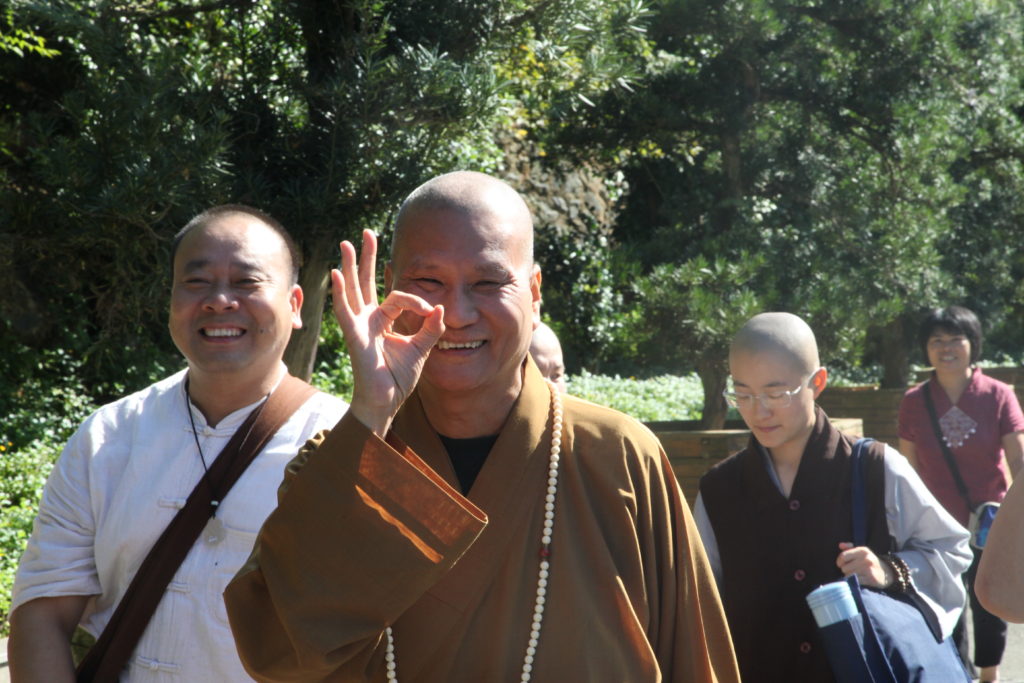
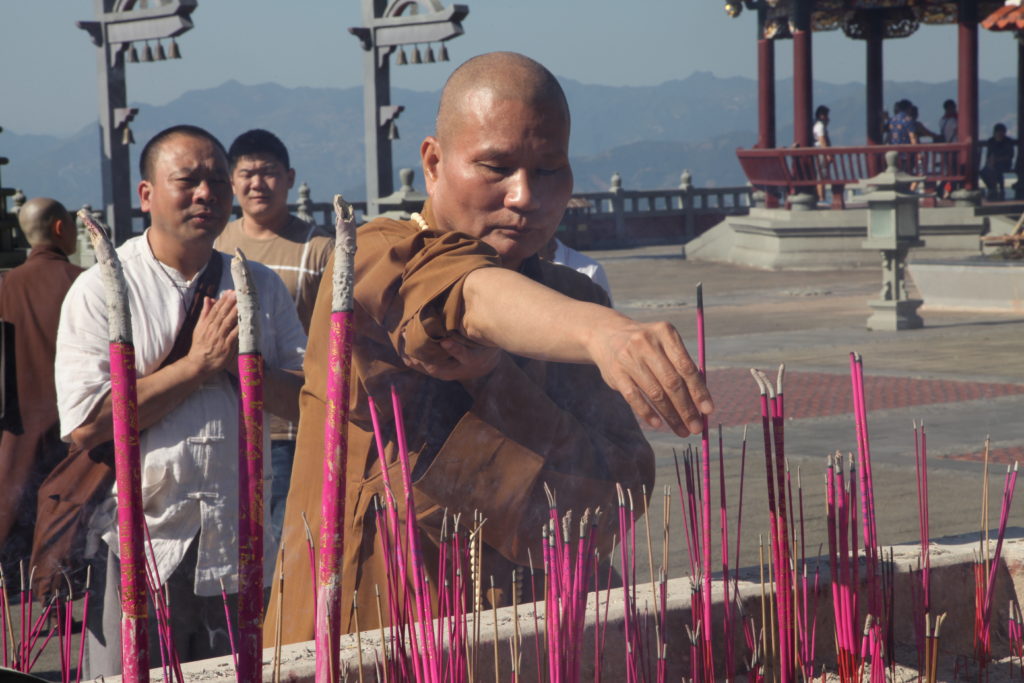
Lighting incense

Enough said
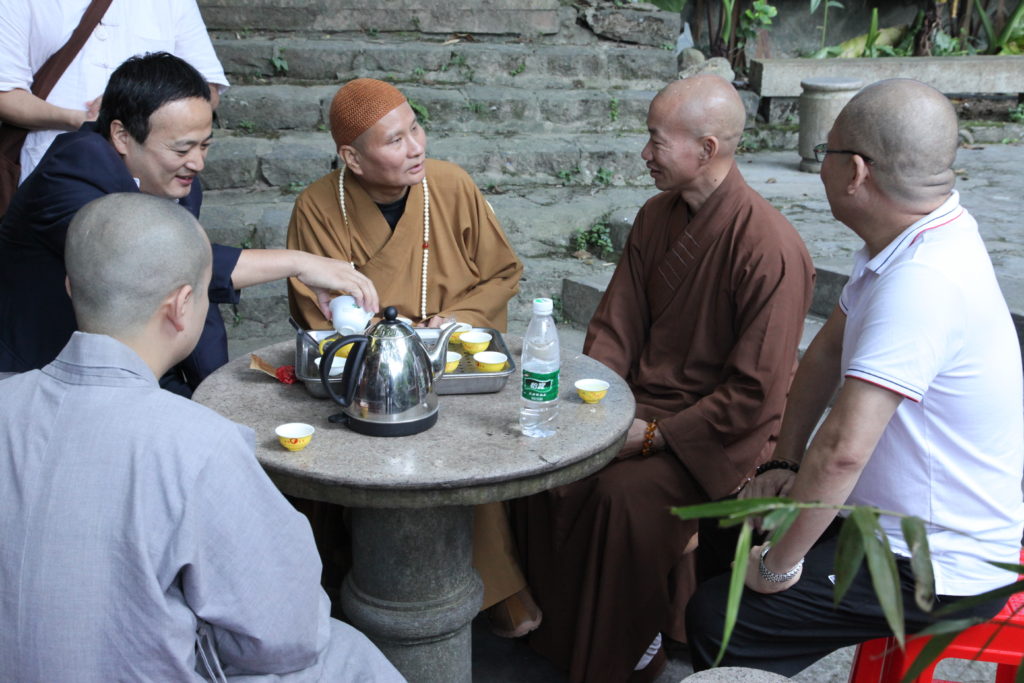
After our chance meeting with this other monk and his disciple, we all entered the temple. Inside, we made the rounds, visiting small shrines to various beings throughout the temple. At each shrine Venerable Wu Dao and others would light incense and bow. Afterwards, Venerable Wu Dao was welcomed by the abbot and they spoke at length in his quarters.
It was a great experience spending the day with Venerable Wu Dao and his relatives and friends, the rich culture and history in China is truly vast. Sometimes it seems like every hill or river has a story rich in history to tell. After our visit to Qingshui Crag we piled into a few cars and headed back to Fuzhou.
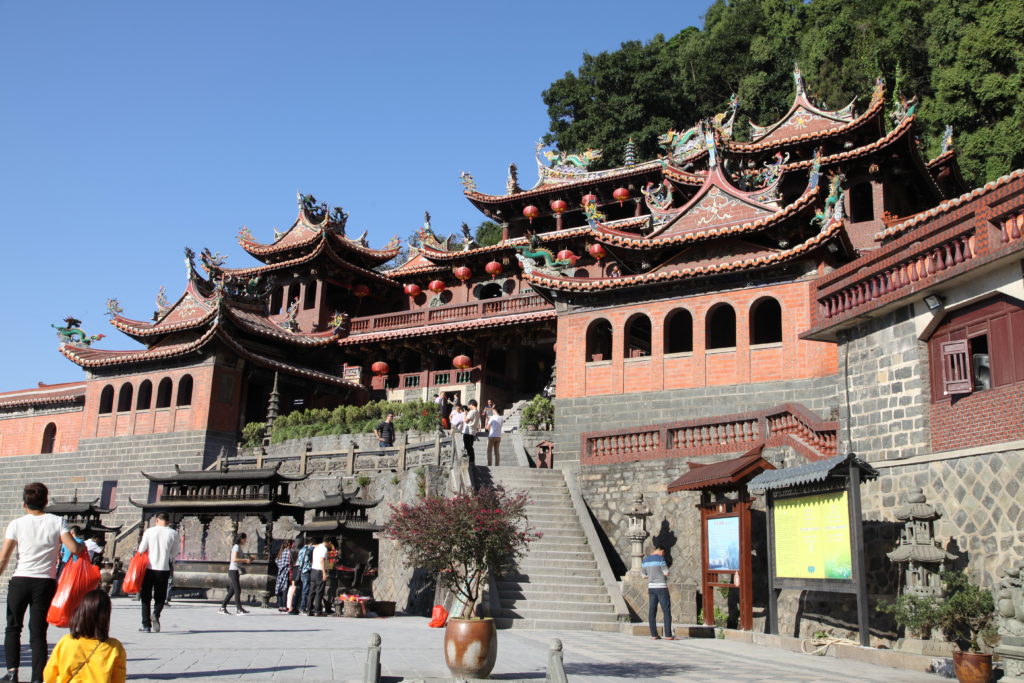
Qingxi Crag Temple
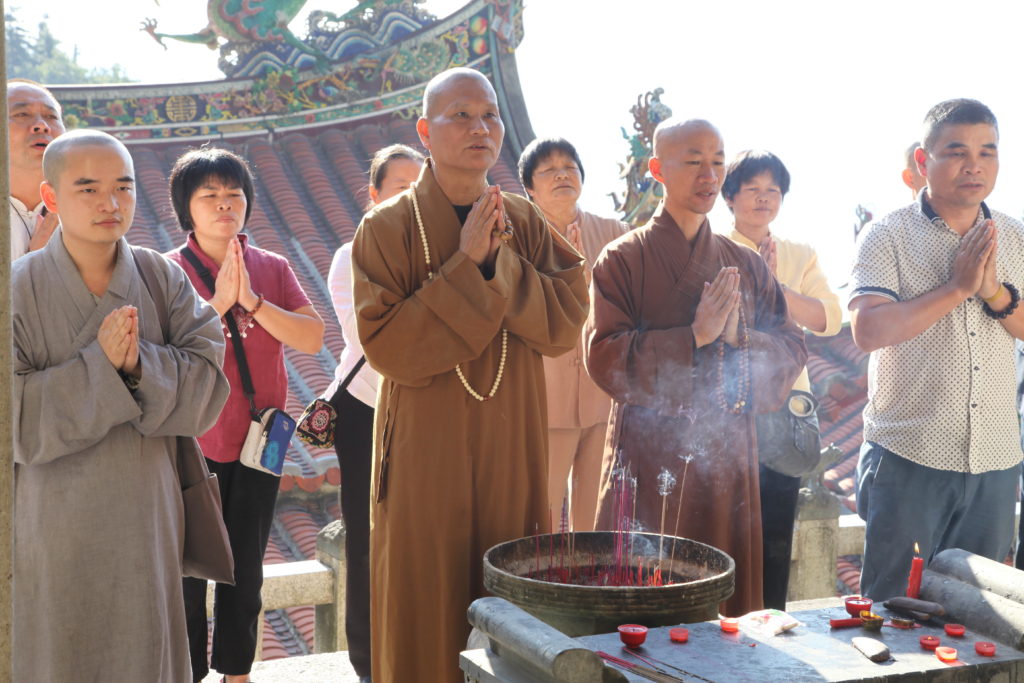
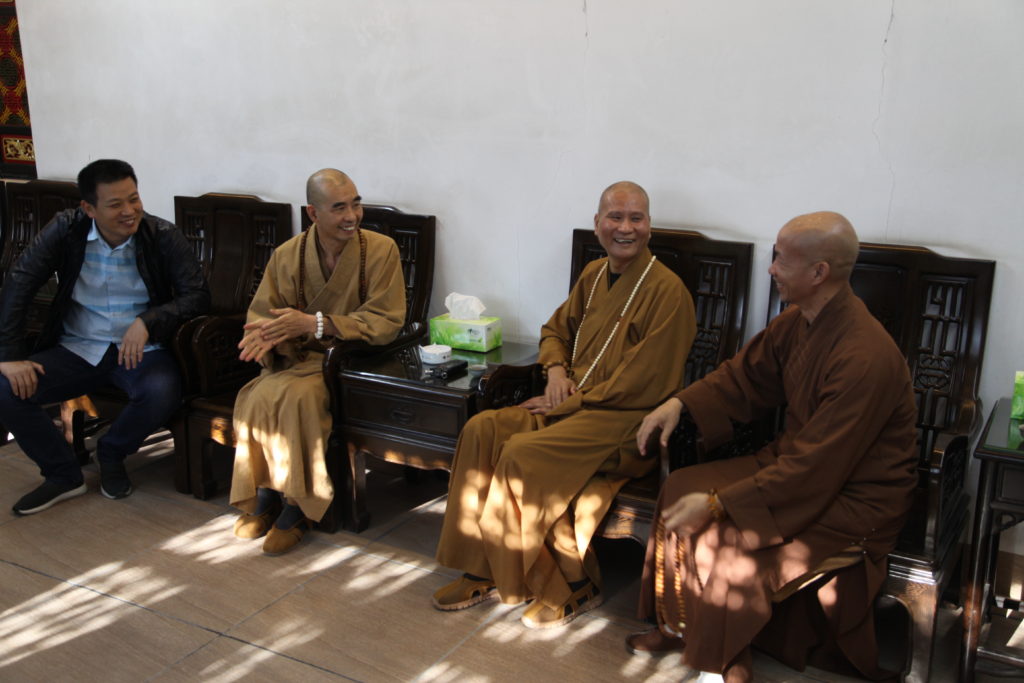
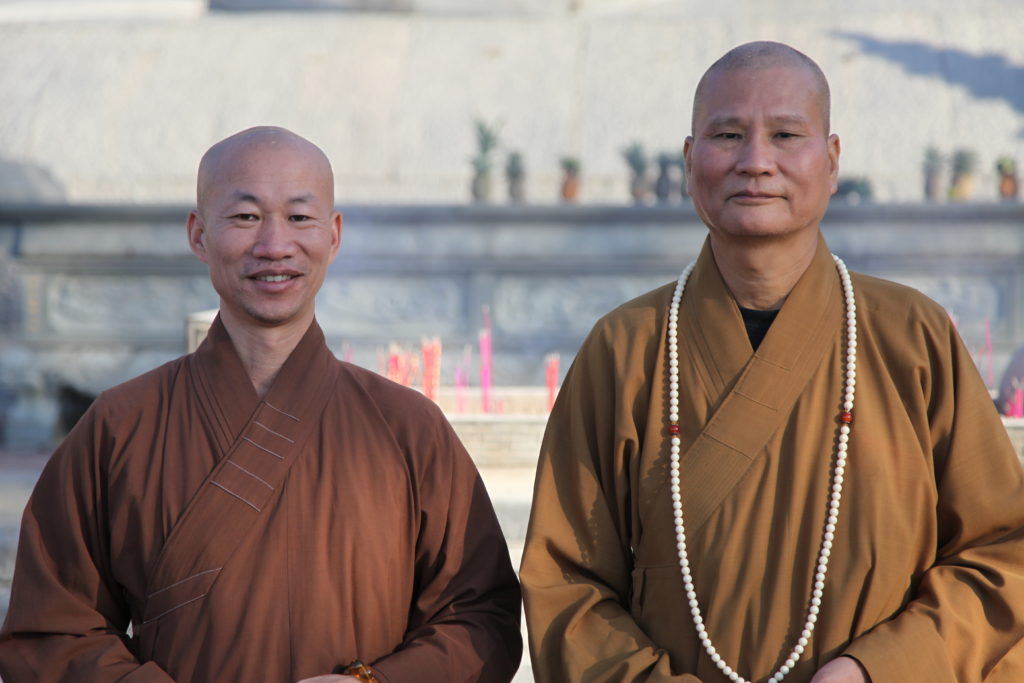
Professor Hughes’ Visit to Fuzhou
Just as our stay in Fuzhou was drawing to a close, Big Bear and I were told that the vice chancellor of the University of Wales Trinity Saint David, Professor Medwin Hughes, and his wife, Fiona, would be visiting Fuzhou as part of their visit to China. Just a year prior in July 2016, an Academy of Sinology was established at the University of Wales Trinity Saint David as a joint institution between the Chin Kung Multicultural Education Foundation and the University of Wales Trinity Saint David.
A few years ago, Professor Hughes had attended an ancestral remembrance ceremony in Hong Kong hosted by Master Chin Kung. He was very impressed by the deep respect paid to tradition; Master Chin Kung had long wanted to create a program that would train scholars in Sinology, so together, Professor Hughes and Master Chin Kung set up the Academy of Sinology. The academy’s goal is to reintroduce the ancient Chinese heritage and culture to the international community, and according to their website, to do so “at a moment when so much change and chaos in the world today undermines people’s faith and belief in social harmony, mutual respect and peace.”
On their trip to Fuzhou, Professor Hughes and Fiona would be accompanied by Venerable Wu Dao. Big Bear and I would stay behind to document this momentous occasion of East meets West.
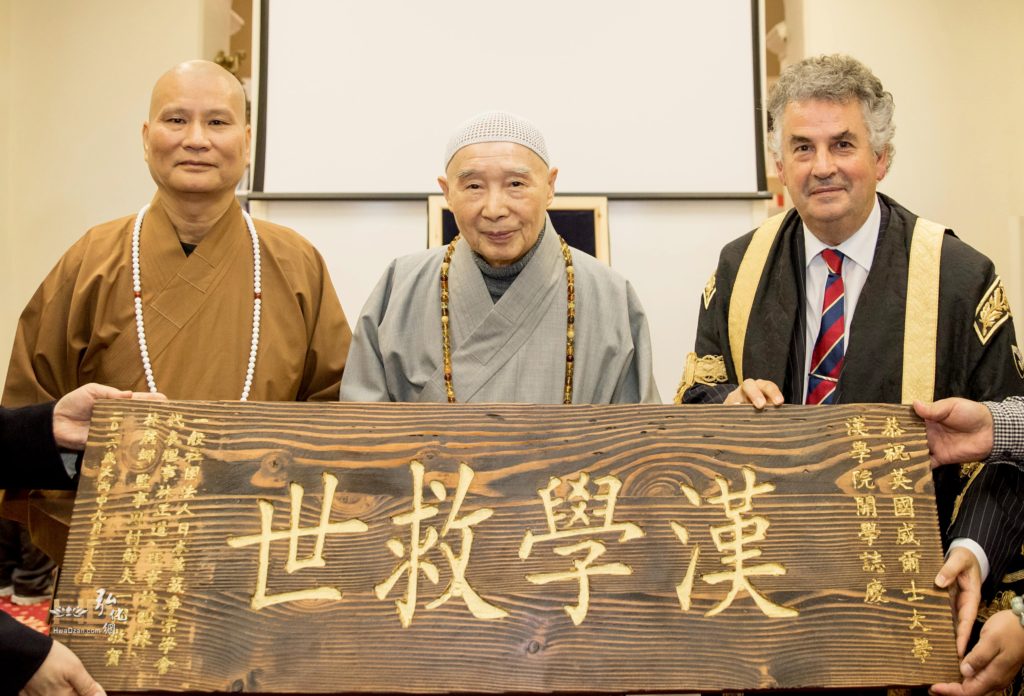
Left to right: Venerable Wu Dao, Master Chin Kung, Professor Medwin Hughes; the Chinese characters say: sinology saves the world
Venerable Wu Dao and the owner of the Amitabha Hotel met Professor Hughes and Fiona at the Fuzhou airport. After a heartwarming reunion of old friends everyone drove back to the Amitabha hotel, where a banquet was held to welcome the guests. During the meal, which consisted of many courses, there was also entertainment including Chinese zither music, a Sichuan opera face-changing dance, and a children’s choir.
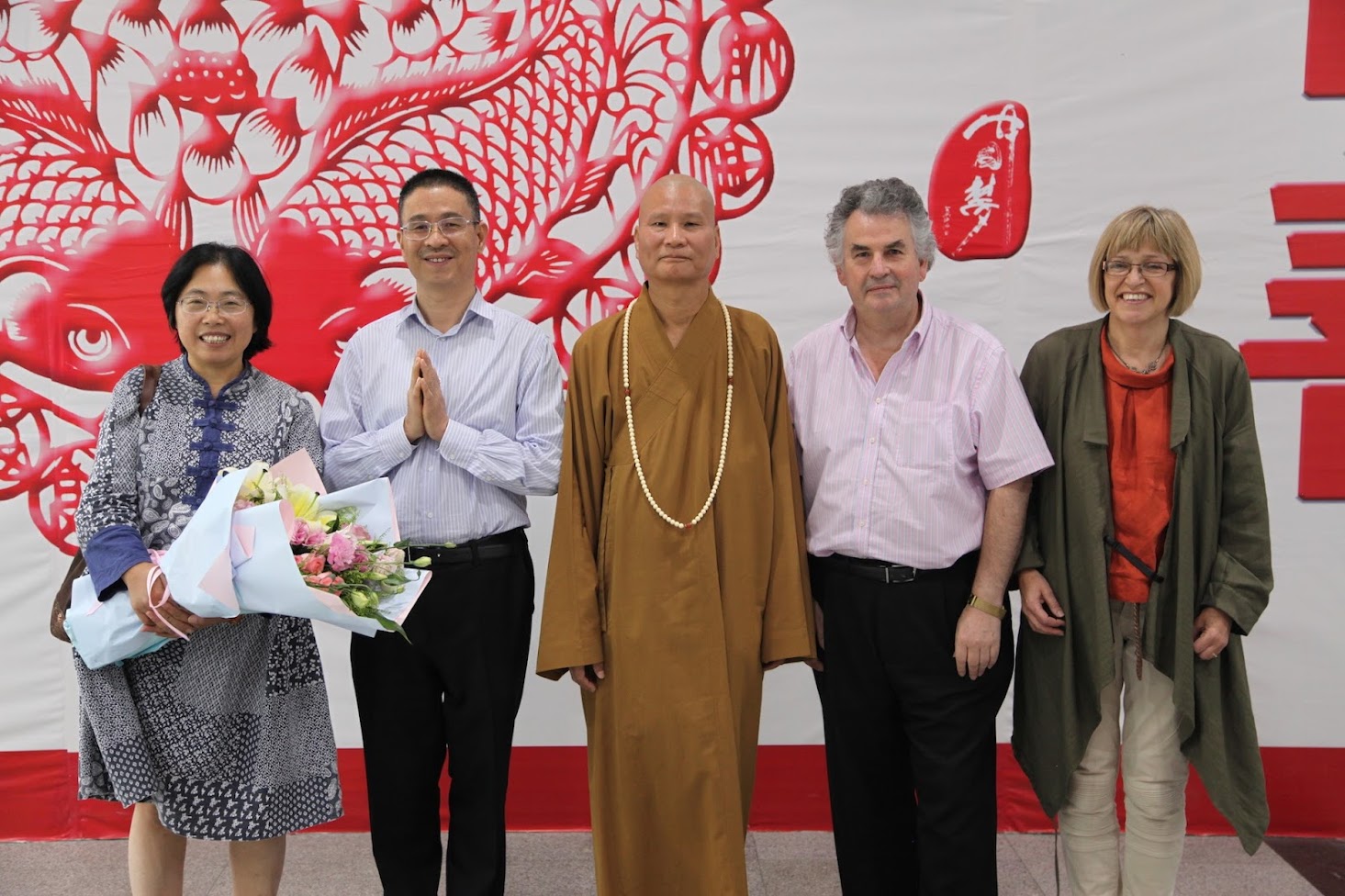
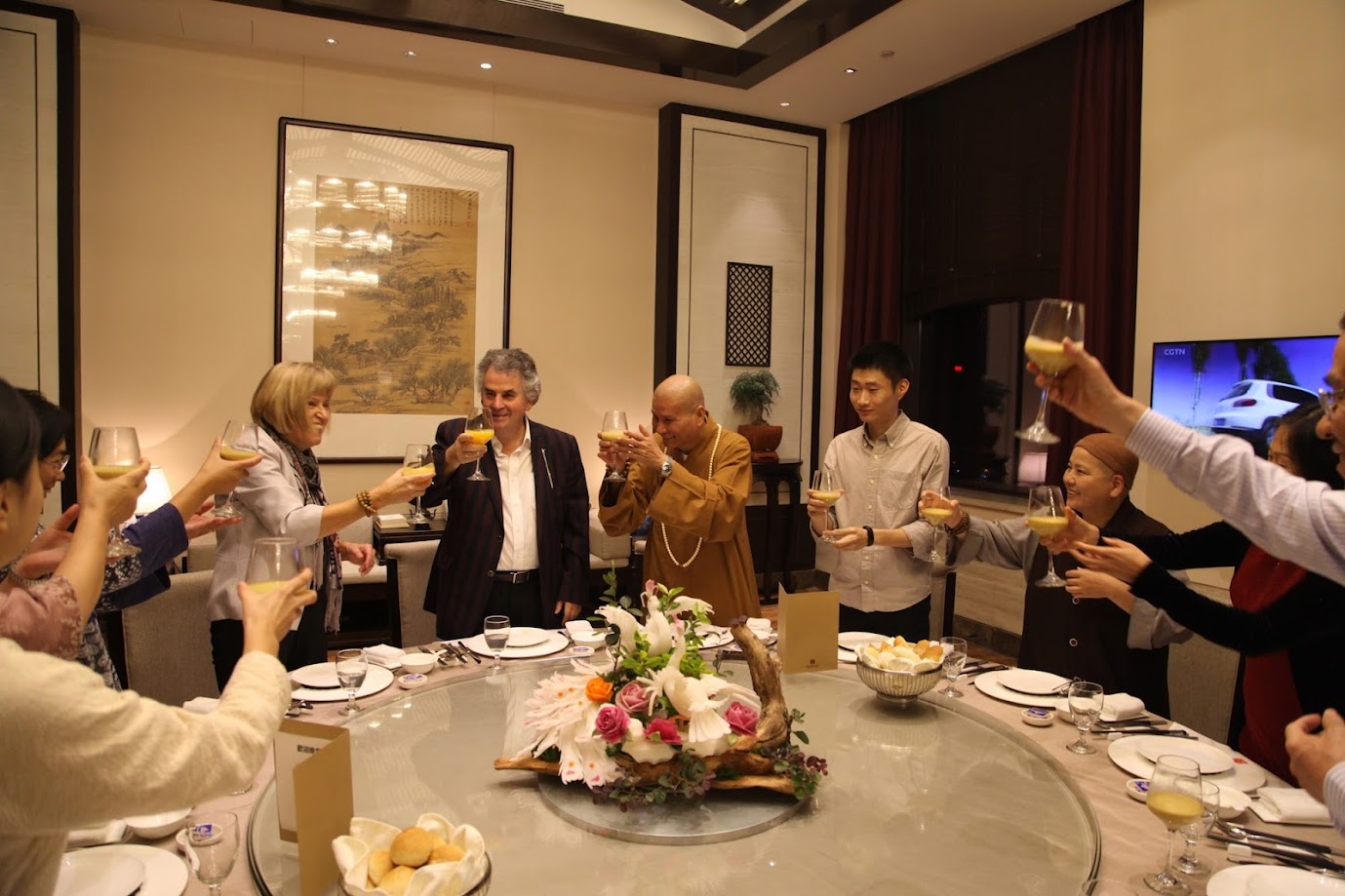
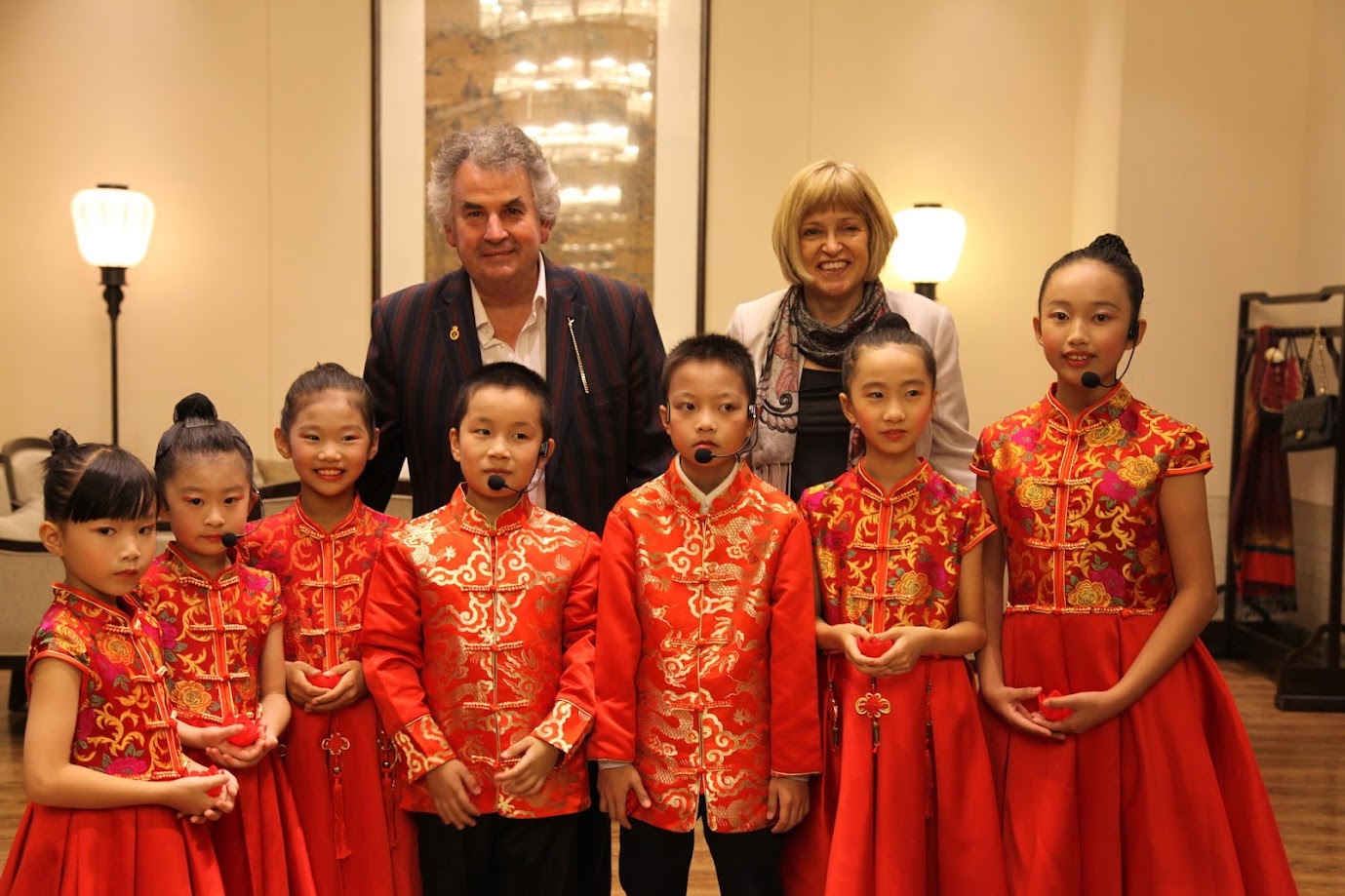
Professor Hughes and Fiona were interested in Chinese ceramics, so the next day we visited the Dehua Ceramic Museum in Quanzhou city to see what Chinese ceramics looked like throughout the ages. The museum was also on the campus of Quanzhou Industrial Arts Vocational College, which we also toured. A local TV crew from a news station also came to interview Professor Hughes during his visit to the museum.
As part of the tour, we visited a campus workshop housing various types of design equipment including 3D printers. There was also a virtual reality simulator; Professor Hughes and Venerable Wu Dao tried it out, and after using it, Venerable Wu Dao remarked, “This world we live in is a simulation too.” Before leaving Professor Hughes expressed to the person leading the tour, who may have been the principal of the school, his interest in setting up cooperation between their school and University of Wales Trinity Saint David.
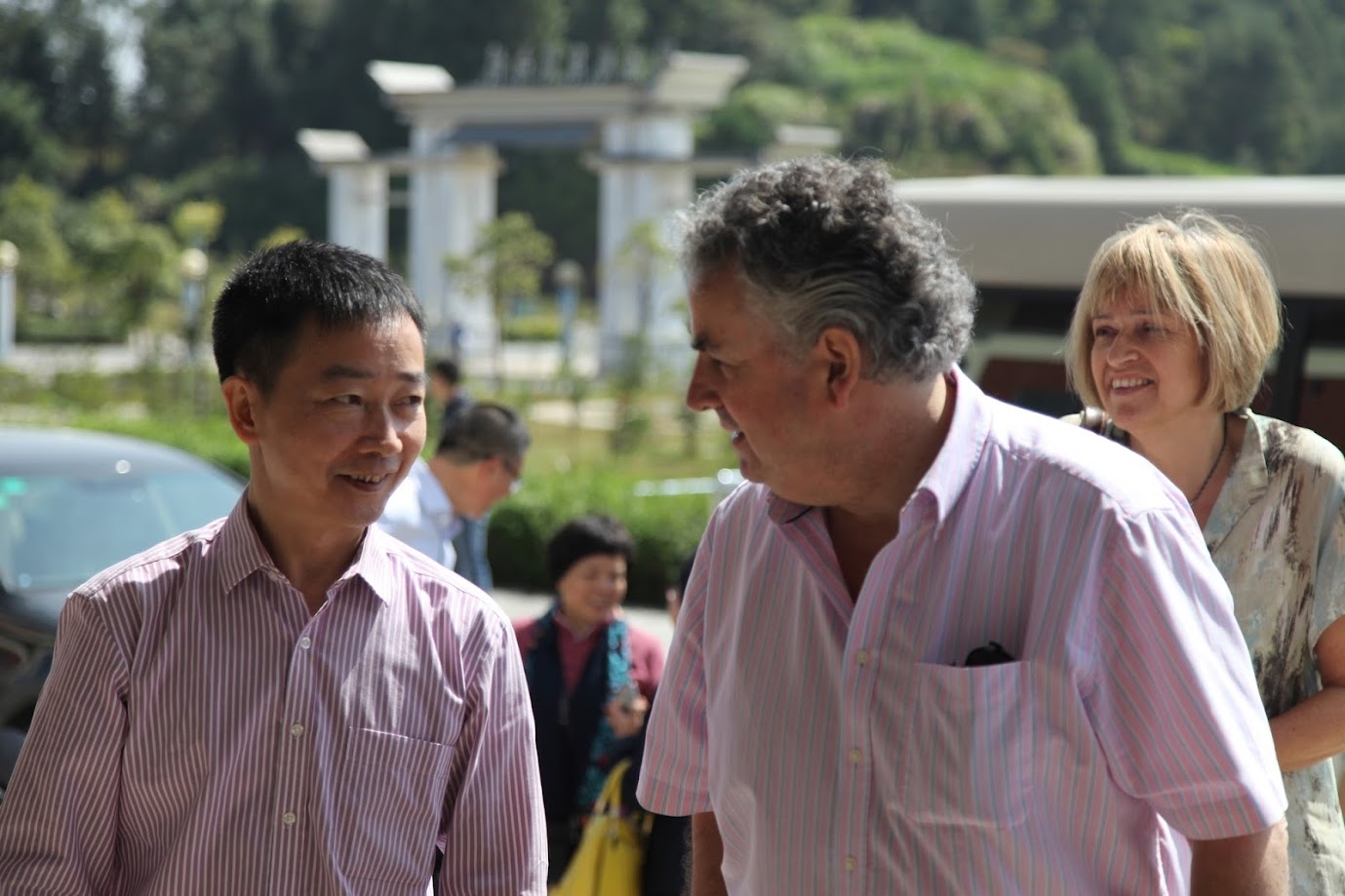
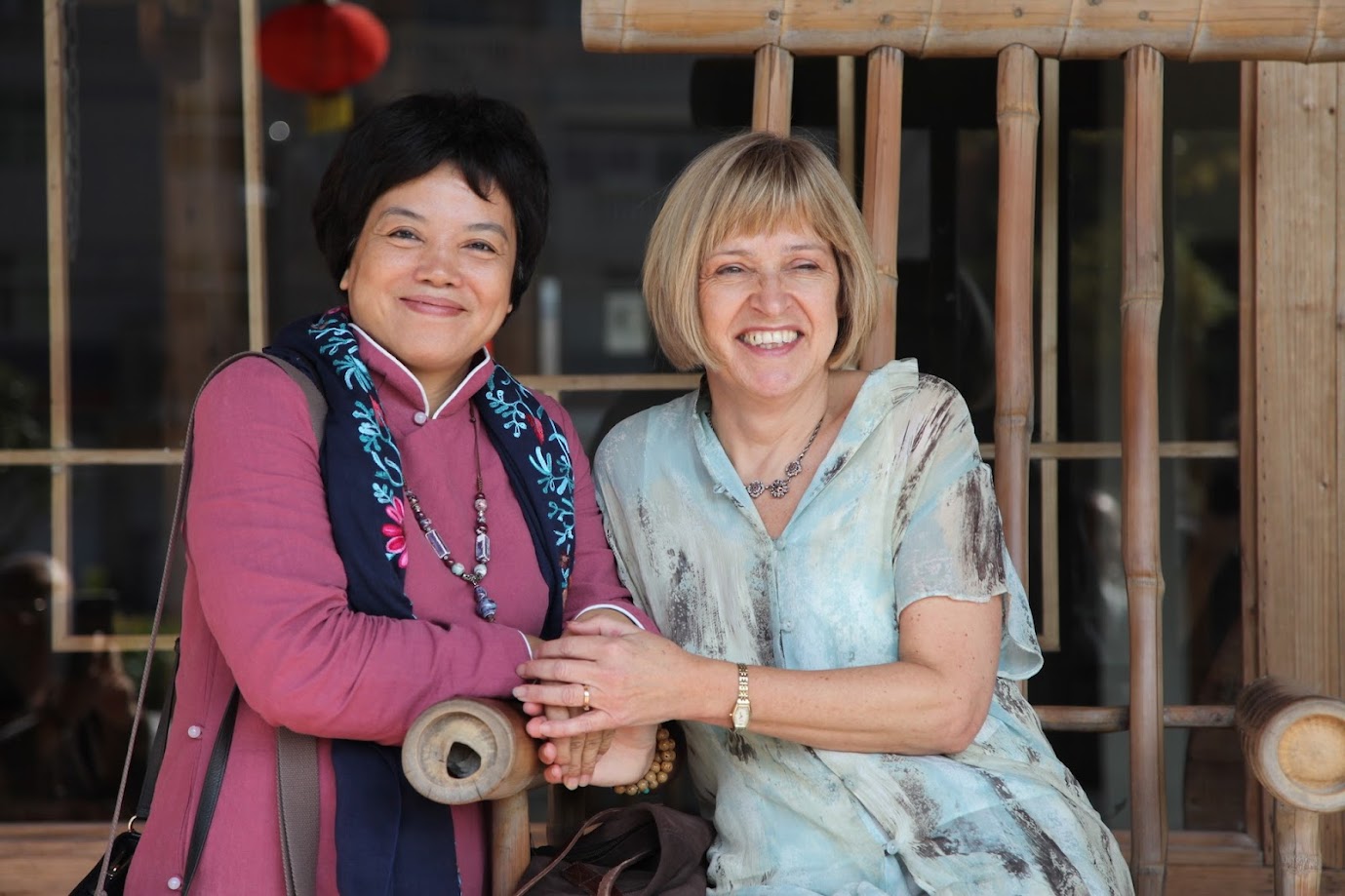
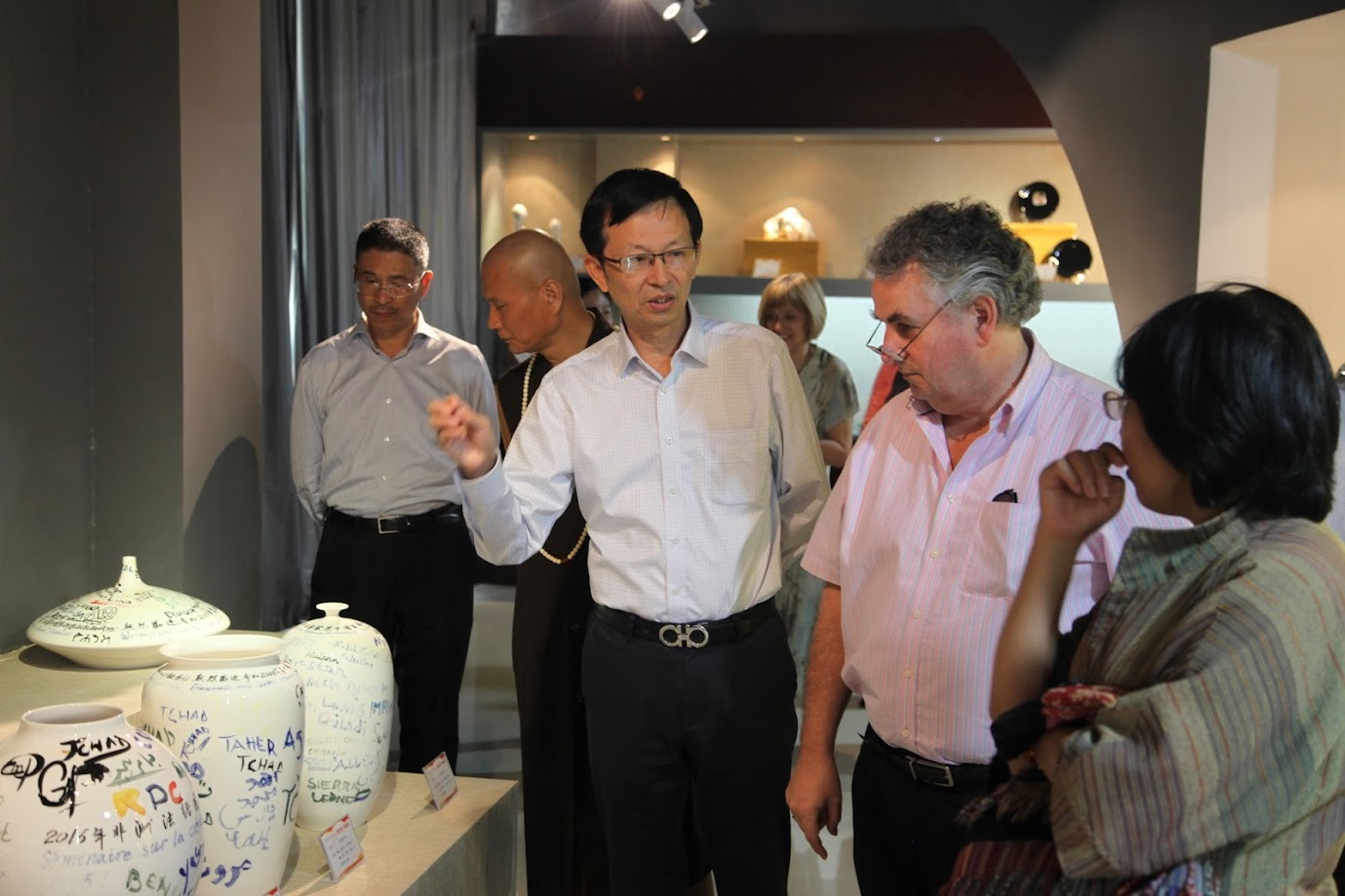
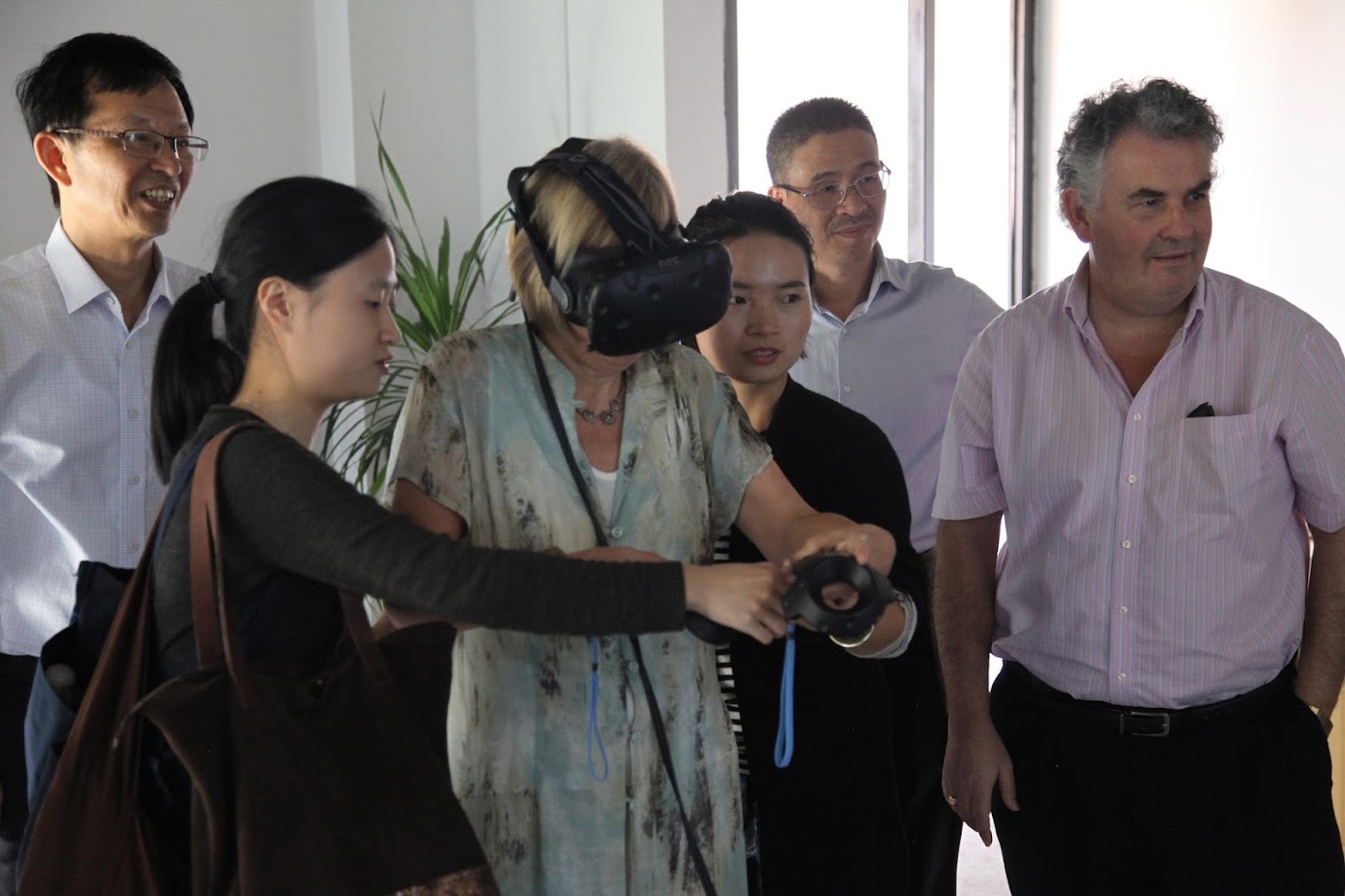
In the afternoon we visited a ceramics factory called the Shunmei Group which makes Christmas, Easter, and other decorations for export to Europe and America. Many of the ceramics were Disney characters; it was an unexpected place to see Tinker Bell and Big Bird. The craftsmanship was impressive.
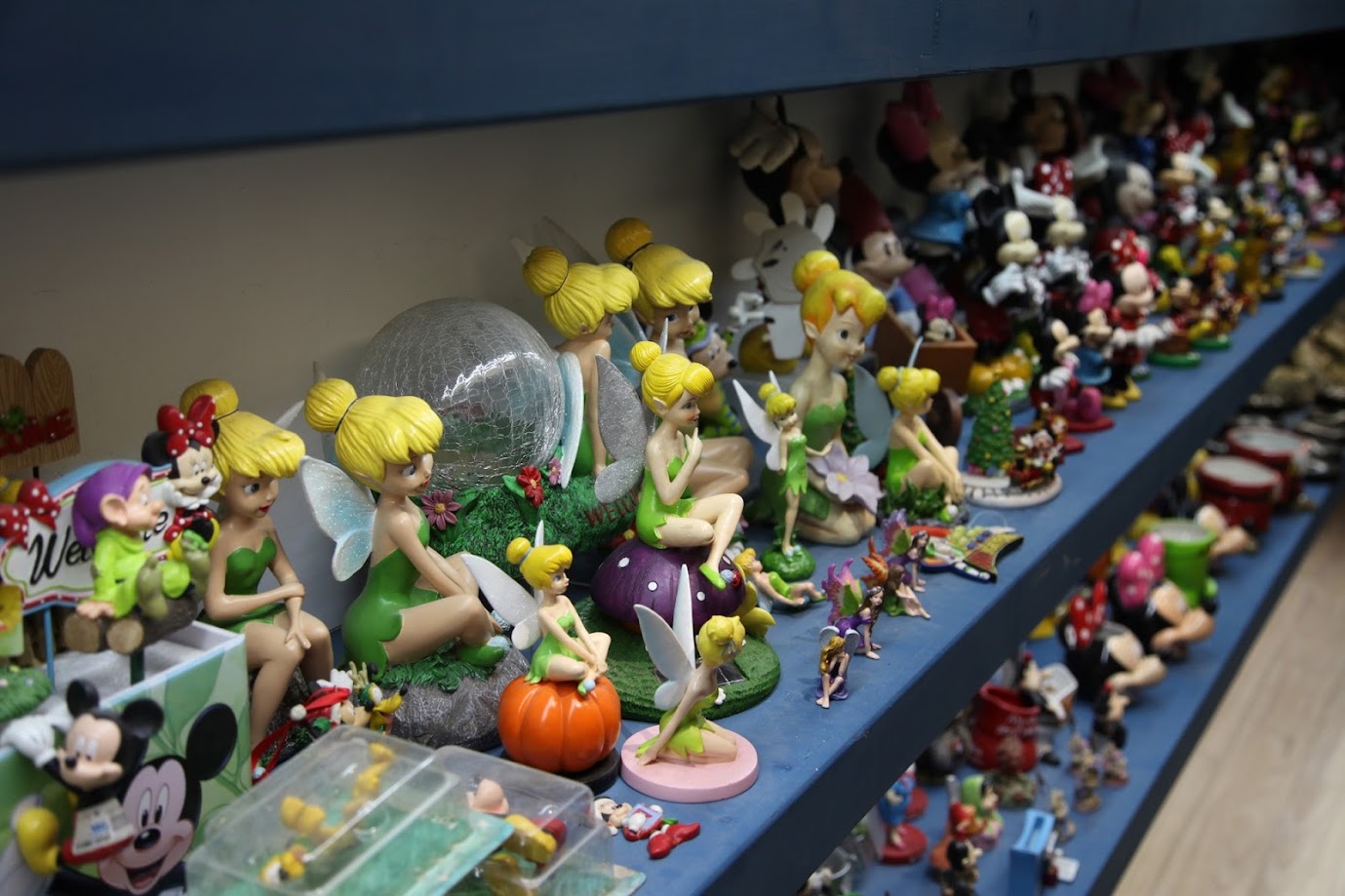
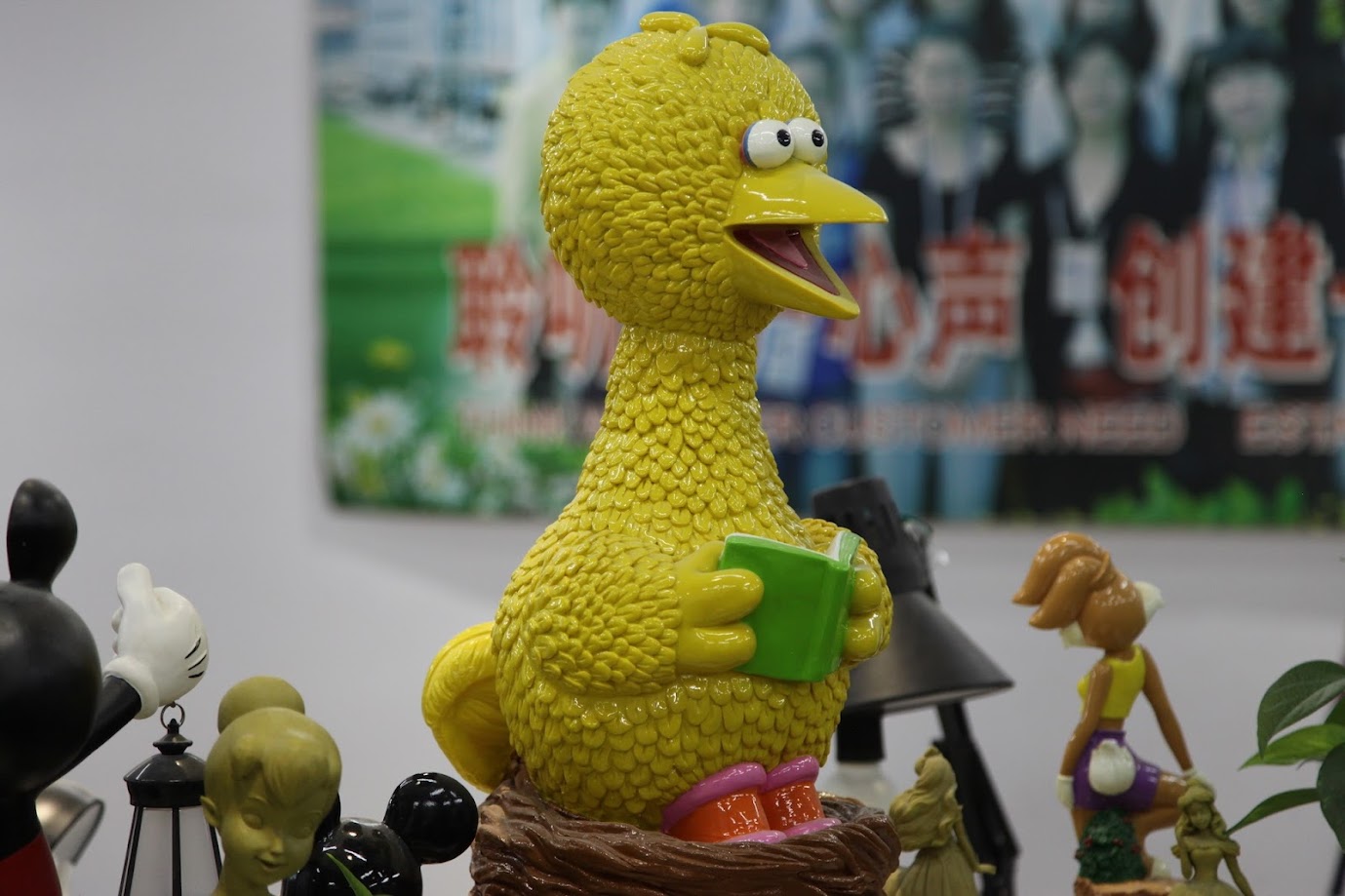
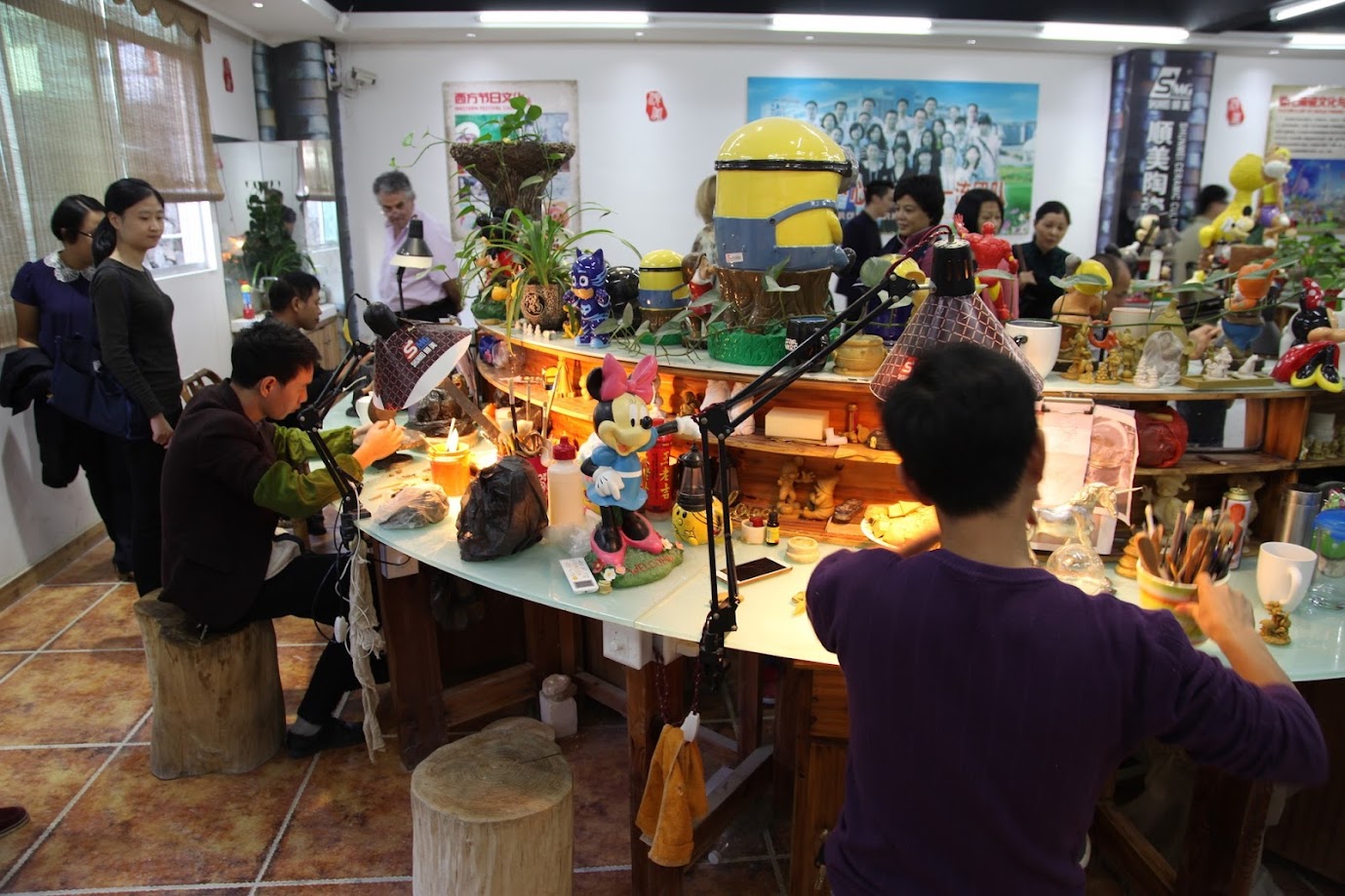
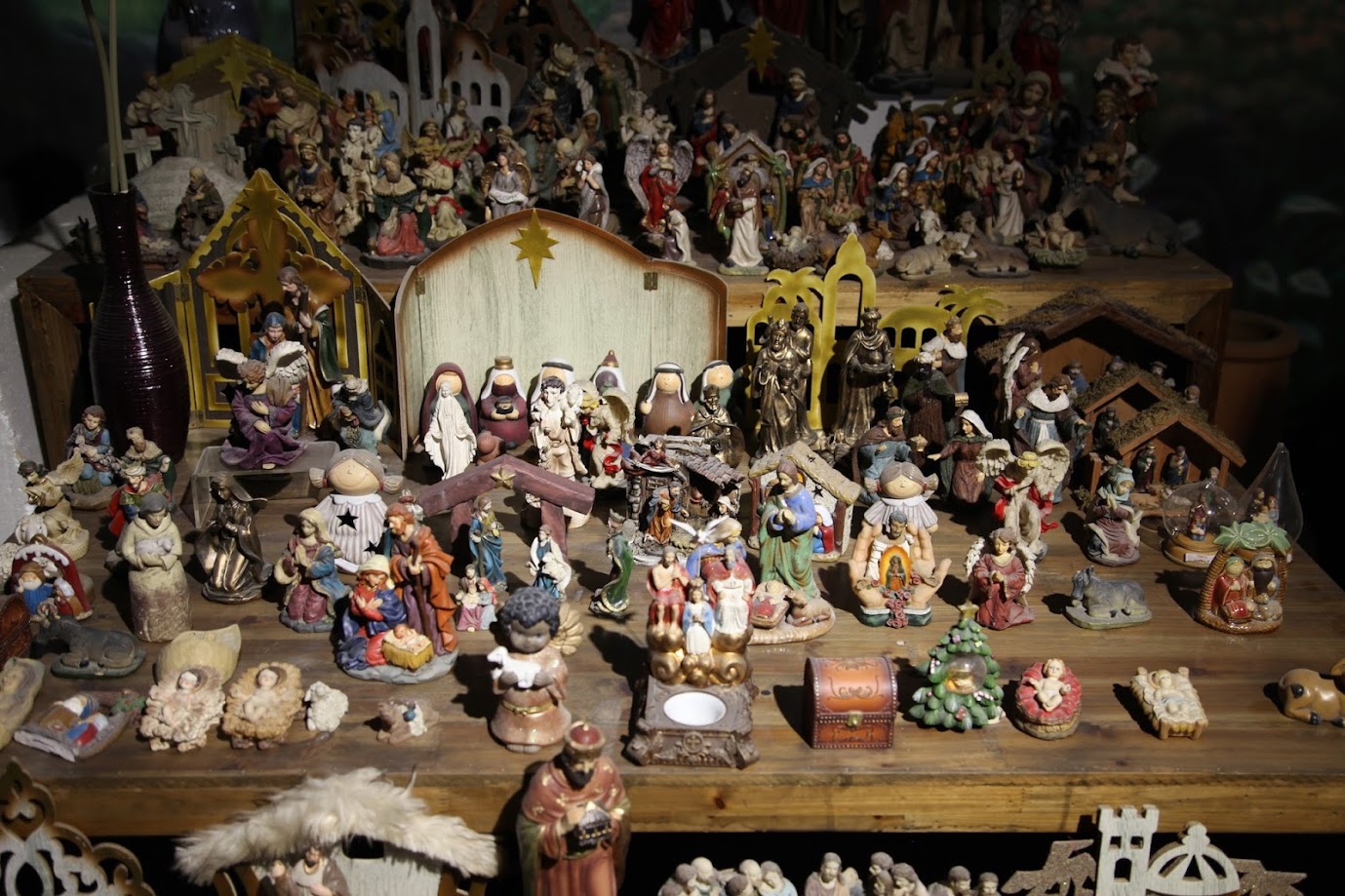
In the evening, we visited a tea plantation and enjoyed a warm autumn evening in the Fujian hills. After dinner we had time to squeeze in one last tour. This time we visited a ceramics factory which produced Buddha and Bodhisattva statues. The exquisite statutes are painted by hand.

Tea plantation
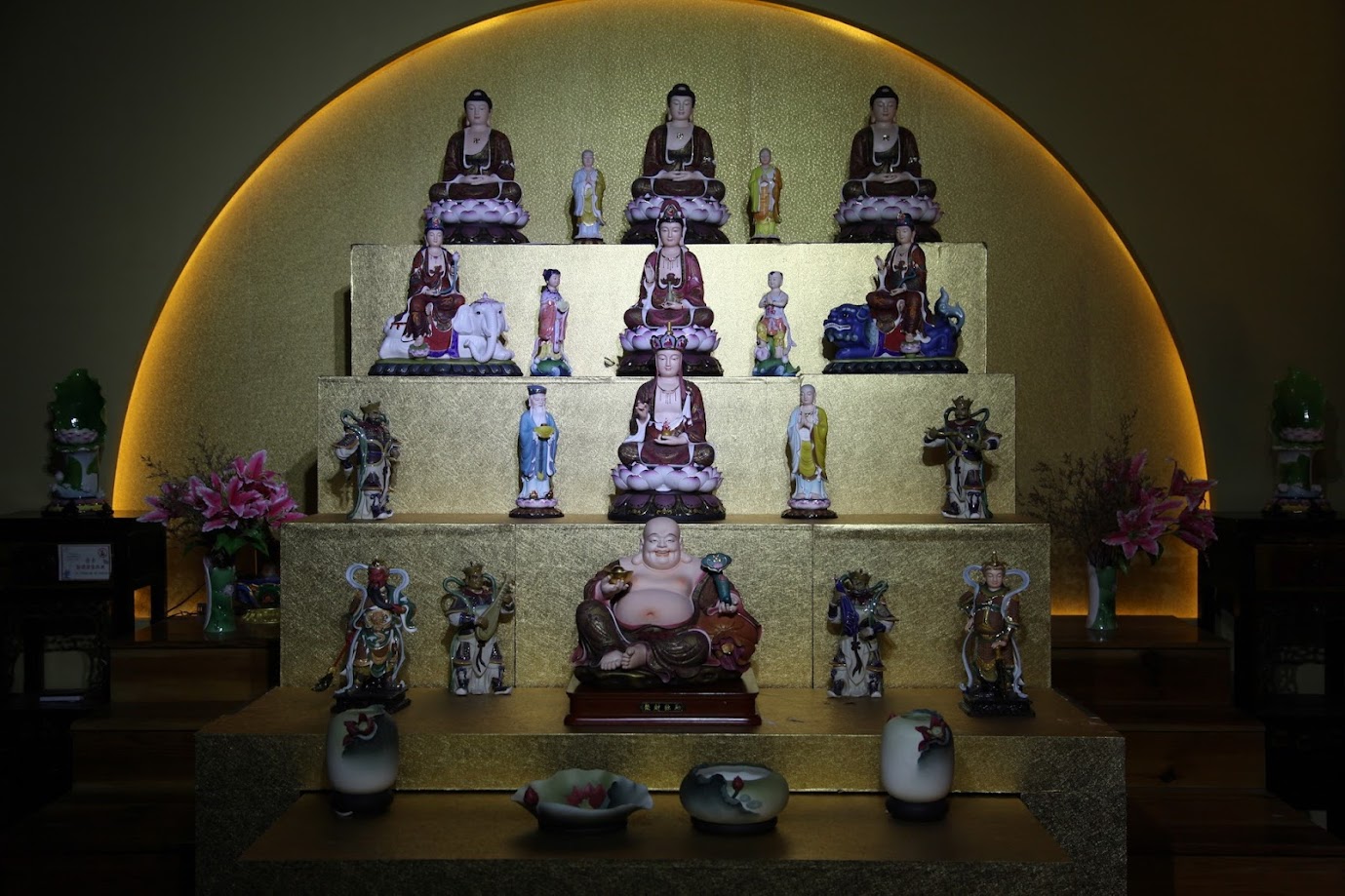
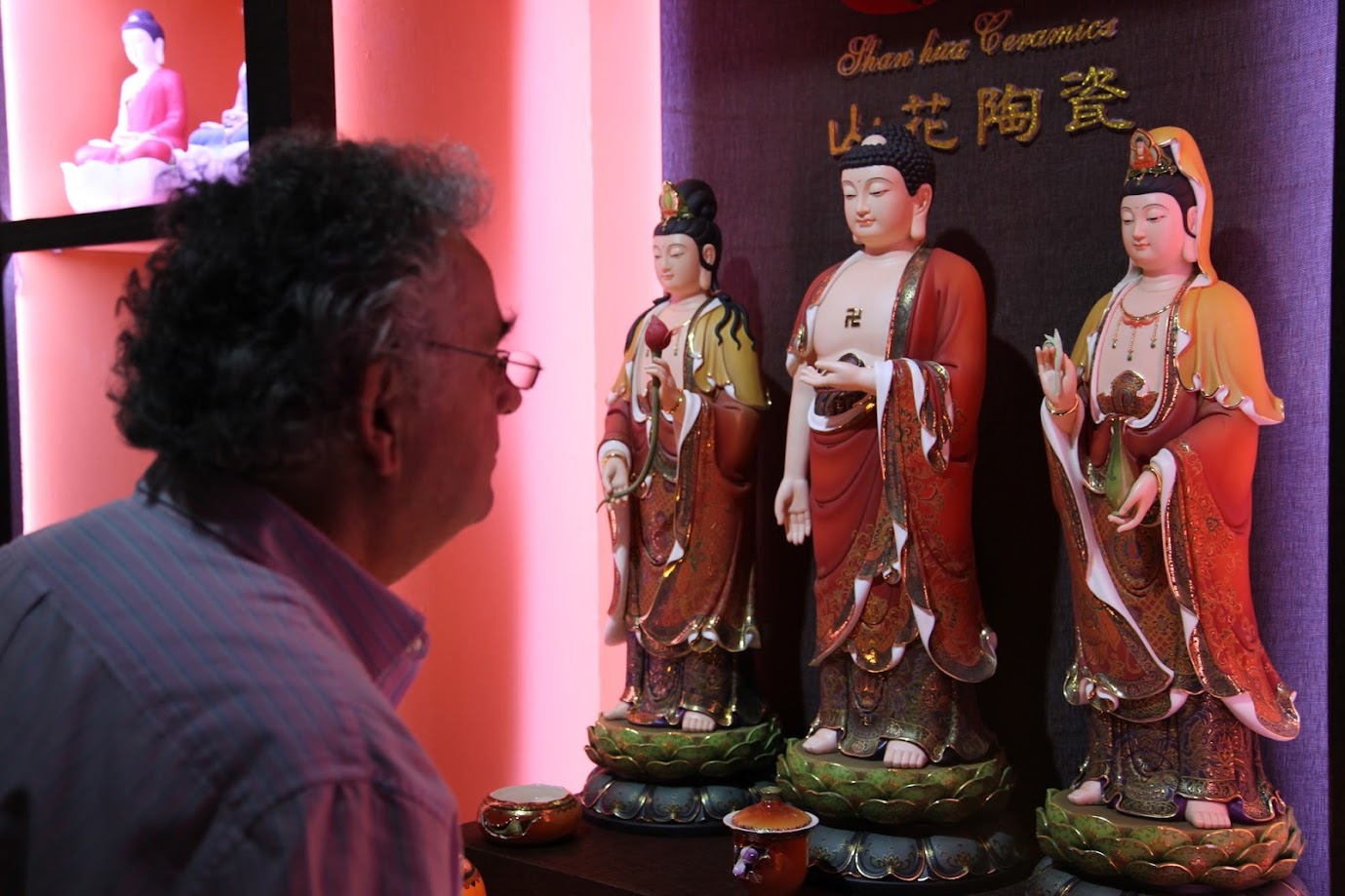
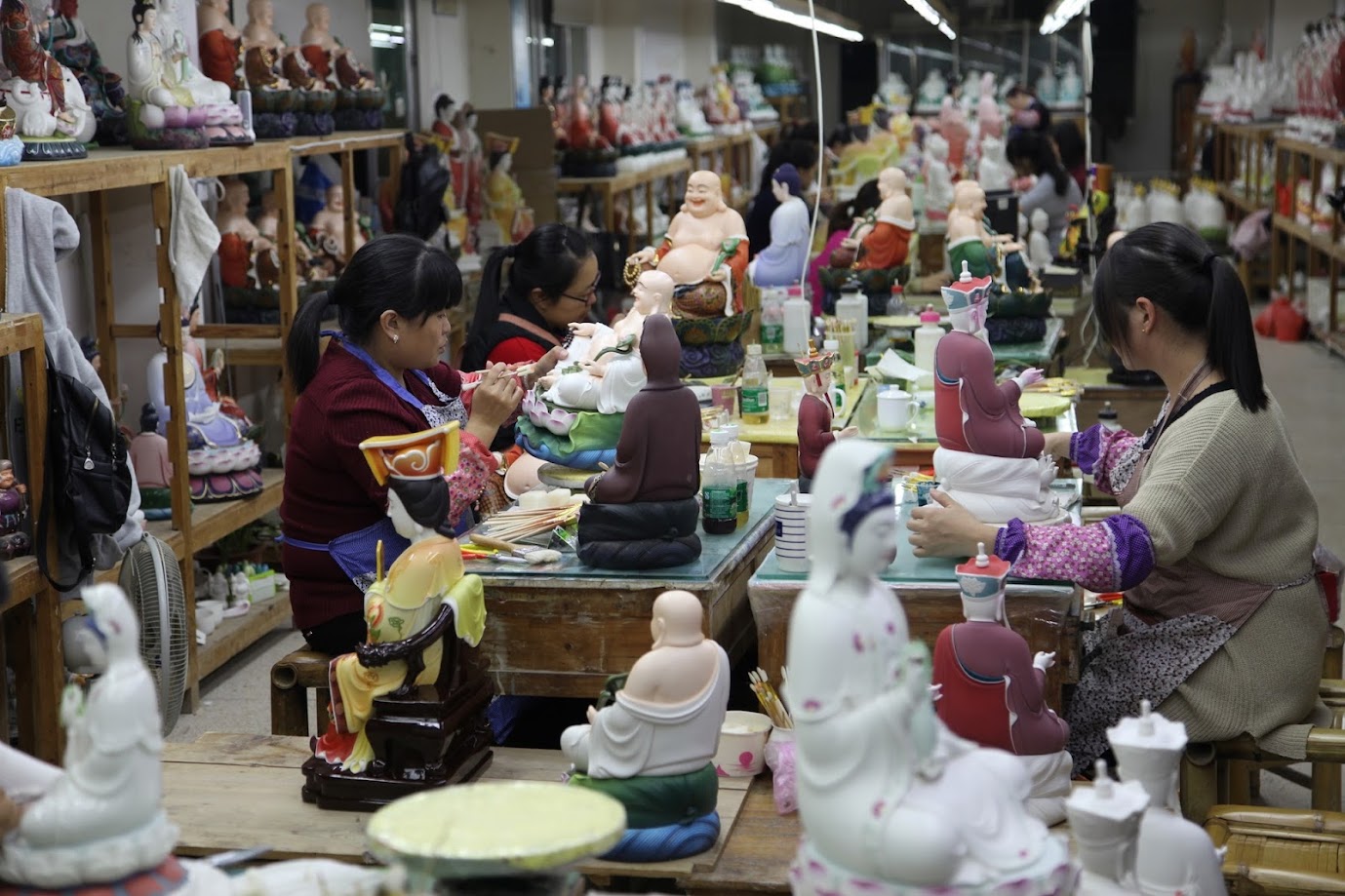
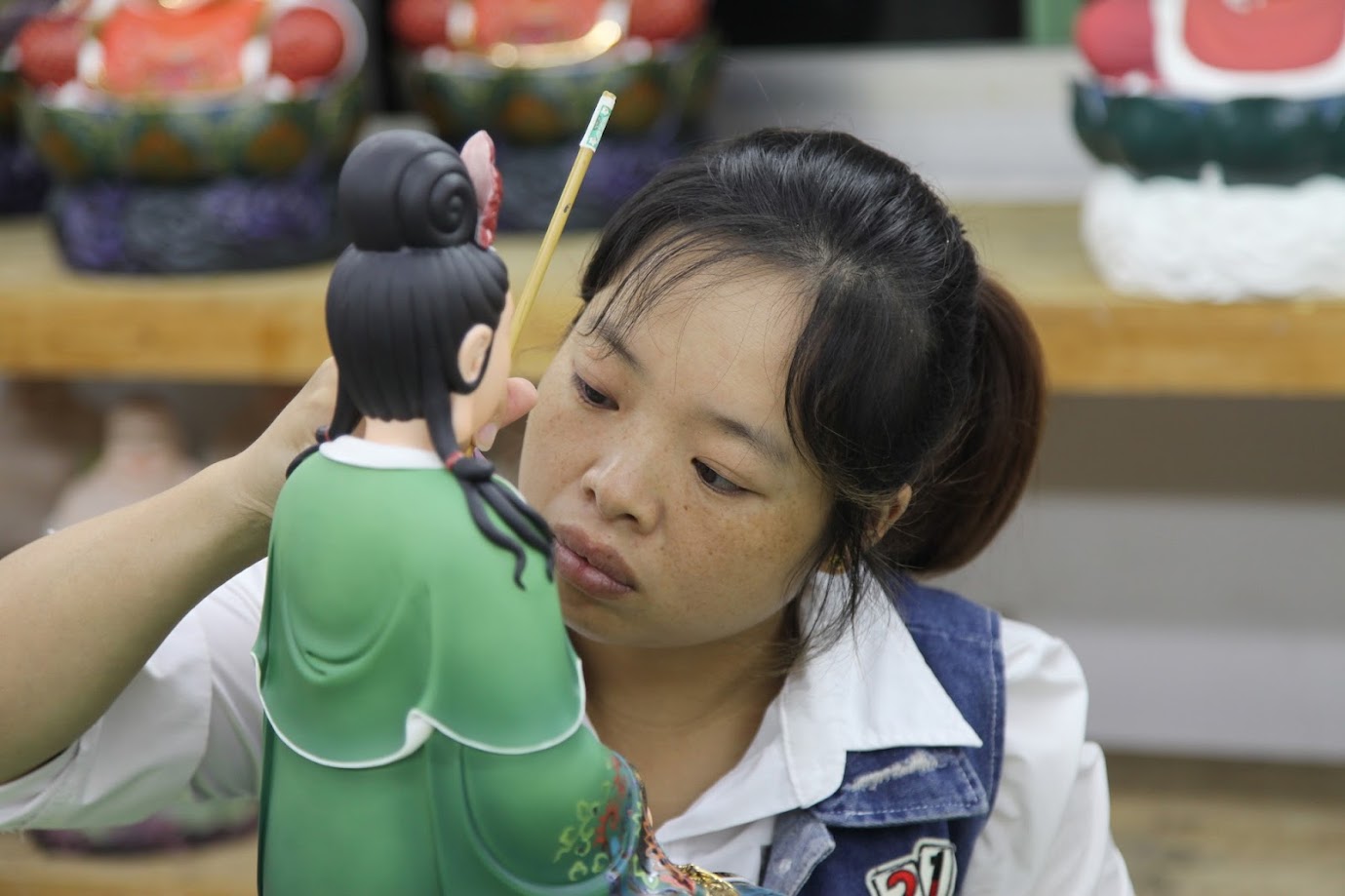
We spent the next day in Fuzhou seeing some of the local sights, including Ten Thousand Buddhas Temple, Three Lanes and Seven Alleys historic district, and the Lin Zexu house and museum.
One stop we made was to Zhengxiang Sinology Institute, which is a school that trains prospective Academy of Sinology students in the Chinese classics. The school consisted of a series of buildings and courtyards, complete with a cafeteria and dorms for students. Professor Hughes was very impressed by the school and later remarked, “I would strongly recommend to anybody who wishes to learn more about the traditions of this country to undertake courses at that institution.”
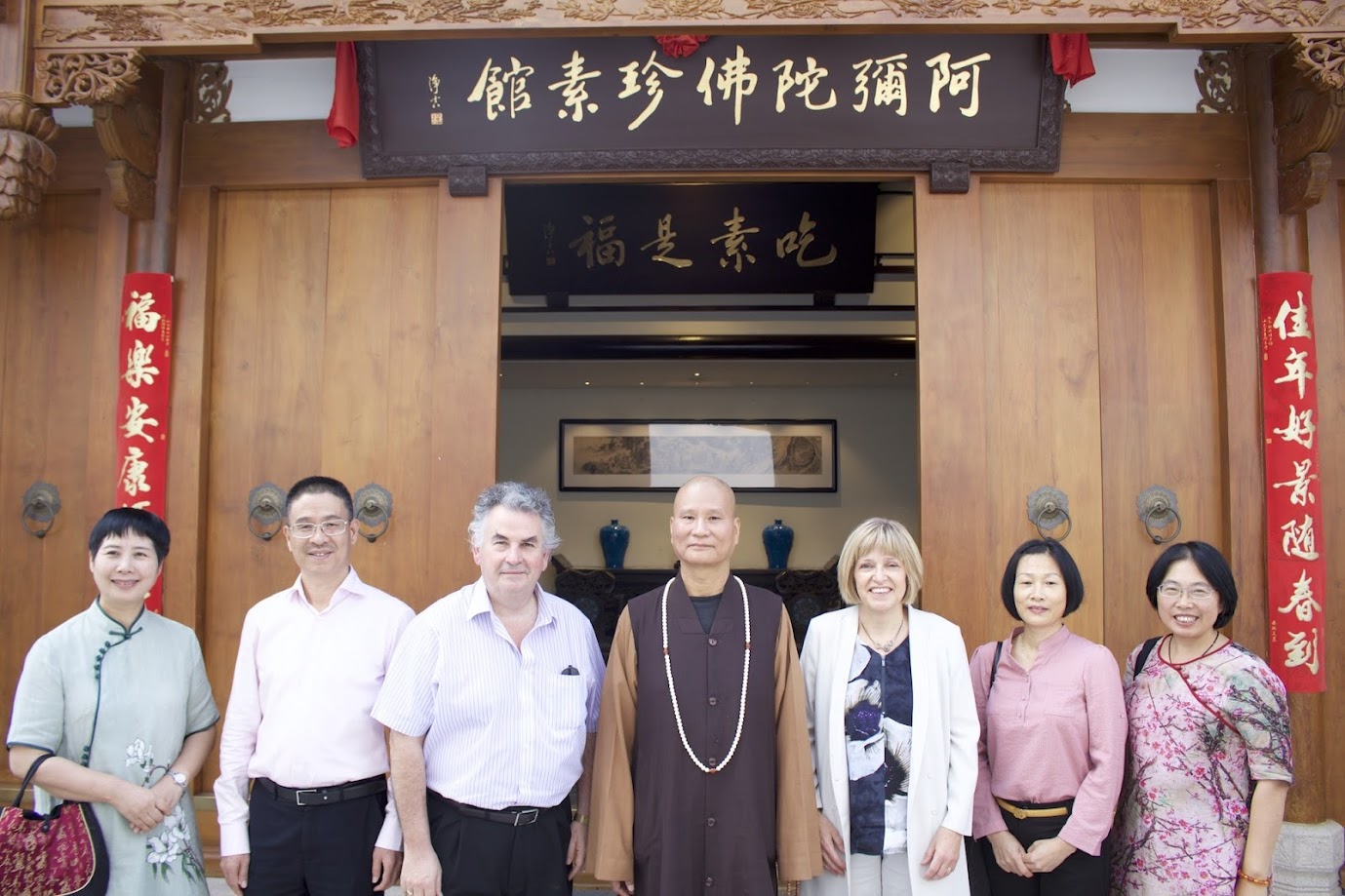
Zhengxiang Sinology Institute
Our last stop was to a local company that has adopted traditional Confucian values in the training of its employees. Signs were hung up around the company to encourage employees. On one sign titled, “Living in a grateful world” it had lines like, “Be grateful to those who have deceived you, for they have deepened your insight” and “Be grateful to those who have abandoned you, for they have taught you to be independent.” After a presentation given by the company, Professor Hughes explained his interest in setting up cooperation between this company and the University of Wales Trinity Saint David.
On the night before they left Fuzhou Professor Hughes and Fiona were kind enough to grant Big Bear and I an interview. Below is a video documenting their visit to Fuzhou and the interview.
East Meets West
Spending the last several days traveling with Venerable Wu Dao and then with Professor Hughes was a great honor. Seeing their friendship was a great boost to morale in these turbulent times we are living in. The deep respect both of these men have for traditional culture has inspired me to learn more about the Chinese heritage and to be more mindful of my own culture. I also look forward to seeing the great things that the Academy of Sinology will do in its future.
